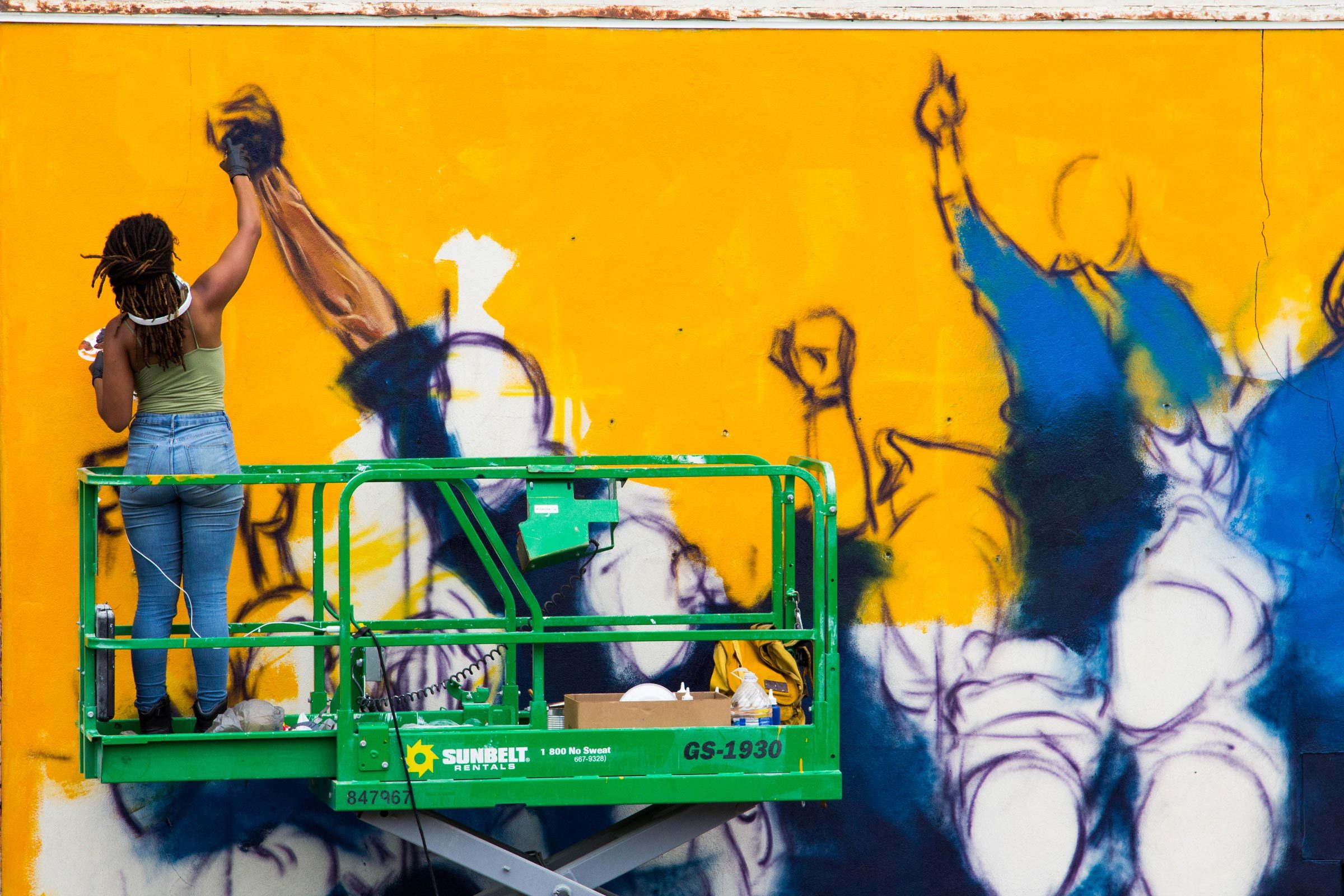
Black art
Black isn’t just beautiful—it can create beautifully, too. Of course, judging from the most celebrated artists of the last 50 years, one might come to the wrong conclusion that White reigns supreme when it comes to artistic prowess. Black artists may not have the name recognition in the mainstream of their White counterparts like the late Andy Warhol and the still-living Jeff Koons, Damien Hirst, and Cindy Sherman, but a number of them are creating significant work. In a sense, though, they’re always flying under the radar. Acknowledging them all would be next to impossible, so consider this a primer, an introduction to some of the noteworthy creators in a well that’s overflowing with Black talent. Not everyone qualifies as totally unsung and some have had national success, but in a world where most people who aren’t art connoisseurs might be hard-pressed to name a single Black artist other than Jean-Michel Basquiat, the Haitian and Puerto Rican wunderkind who died at age 27 in 1988, more people of all races should know these names. You don’t have to be an art expert to appreciate these 10 hidden messages in world-famous paintings.
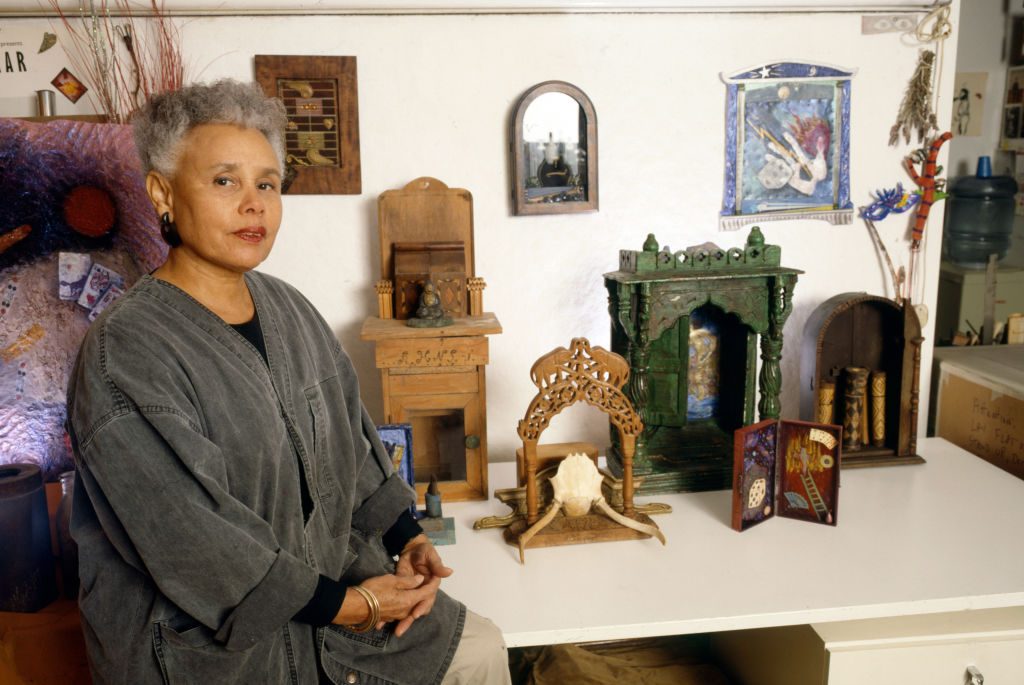
Betye Saar
In 2019, at age 93, Betye Saar was preparing to open two solo shows concurrently, one at New York City’s Museum of Modern Art and the other at the Los Angeles County Museum of Art. So much for slowing down. A master of re-appropriation, she uses everyday found objects to comment on economic, political, and cultural institutions, with a strong feminist streak running through her creations, as in “The Liberation of Aunt Jemima,” from 1972, which was inspired by the 1968 assassination of Martin Luther King Jr. and presaged the current push to retire the iconic but racially stereotypical pancake mascot by nearly a half-century. When asked by the New York Times, on the eve of her bi-coastal shows, about her long-gestating national recognition and why now, as opposed to half her life ago, the now-94-year-old L.A. native said: “Because it’s about time! I’ve had to wait till I’m practically 100.” You’re never too old to accomplish any goal, but these are the peak ages for certain things.
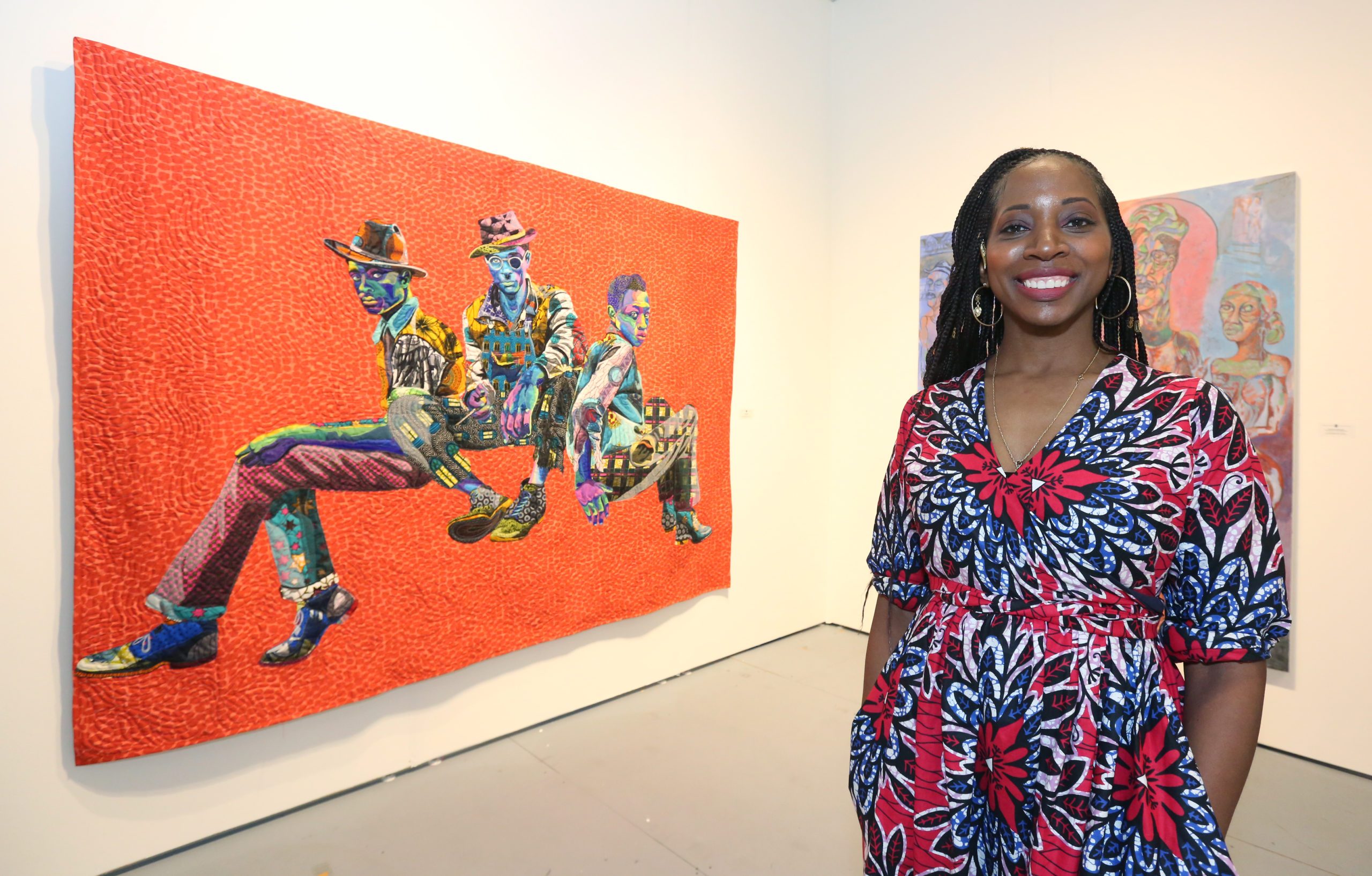
Bisa Butler
Black popular culture fuels the work of Bisa Butler, who uses a variety of fabrics and colors to impress the image of Black legends like Marvin Gaye and Nina Simone onto quilts. While studying fine art at Howard University, she began using fabric in her painting and switched to quilting as a way to protect her young daughter from toxic paint fumes. Born in New Jersey and based in Brooklyn, she was a finalist for the Museum of Arts and Design’s Burke Prize in 2019, and TIME magazine chose her quilted portrait of Wangari Maathai, an environmentalist and women’s rights activist who was the first African woman to win the Nobel Peace Prize, for the cover of its 2020 issue honoring 100 women of the year. So while her name might not be trending, her work is getting unprecedented exposure. “Calling Butler a quilt artist doesn’t quite capture her mastery of this craft, once traditional women’s work, now considered fine art,” Cynthia Close wrote in Art & Object in April 2020. Find out about 35 more Black Americans you didn’t learn about in history class.
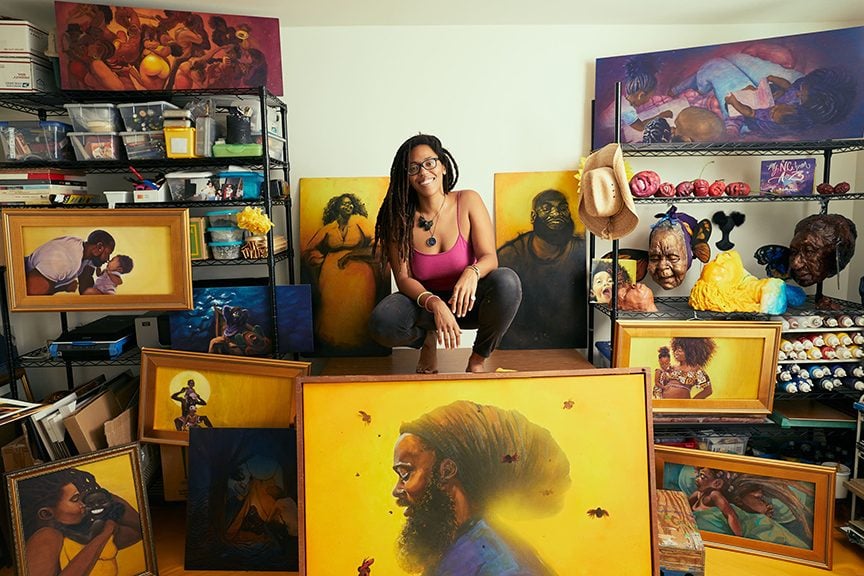
Dare Coulter
Dedicated to creating positive images of people of color through sculptures, murals, drawings, and paintings, Dare Coulter dares to go big. Make that supersized. Her 143-foot-long “#CaptainOfYourFAYte” is the biggest mural in Fayetteville, North Carolina, and she outdid that one with the 200-foot-long “#BlackCowboysGSO” in Greensboro. Coulter’s aspirations are decidedly global: She told the lecture series CreativeMornings that she intends to have created a mural on every continent in the next two years, a goal that the pandemic may have put on hold. In February, she did get to complete another two-year project: creating all of the images for Michelle Lanier’s My N.C. from A to Z, a book on North Carolina history that focuses specifically on Black North Carolinians. “The characters in the illustrations and those honored are all black,” she wrote on her website. “The writer and the illustrator are black. In all places that a black vendor could be used to create this book and associated materials, they were. Black historians were consulted; once we began doing interviews for the book they were filmed in libraries with historically black populations; the print materials were produced by a black design firm; the catering for the preview and the launch events were by the same great team of black women. Isn’t that magical?” Coulter is helping to put North Carolina on the art map. Here is one of the nicest places in her home state.
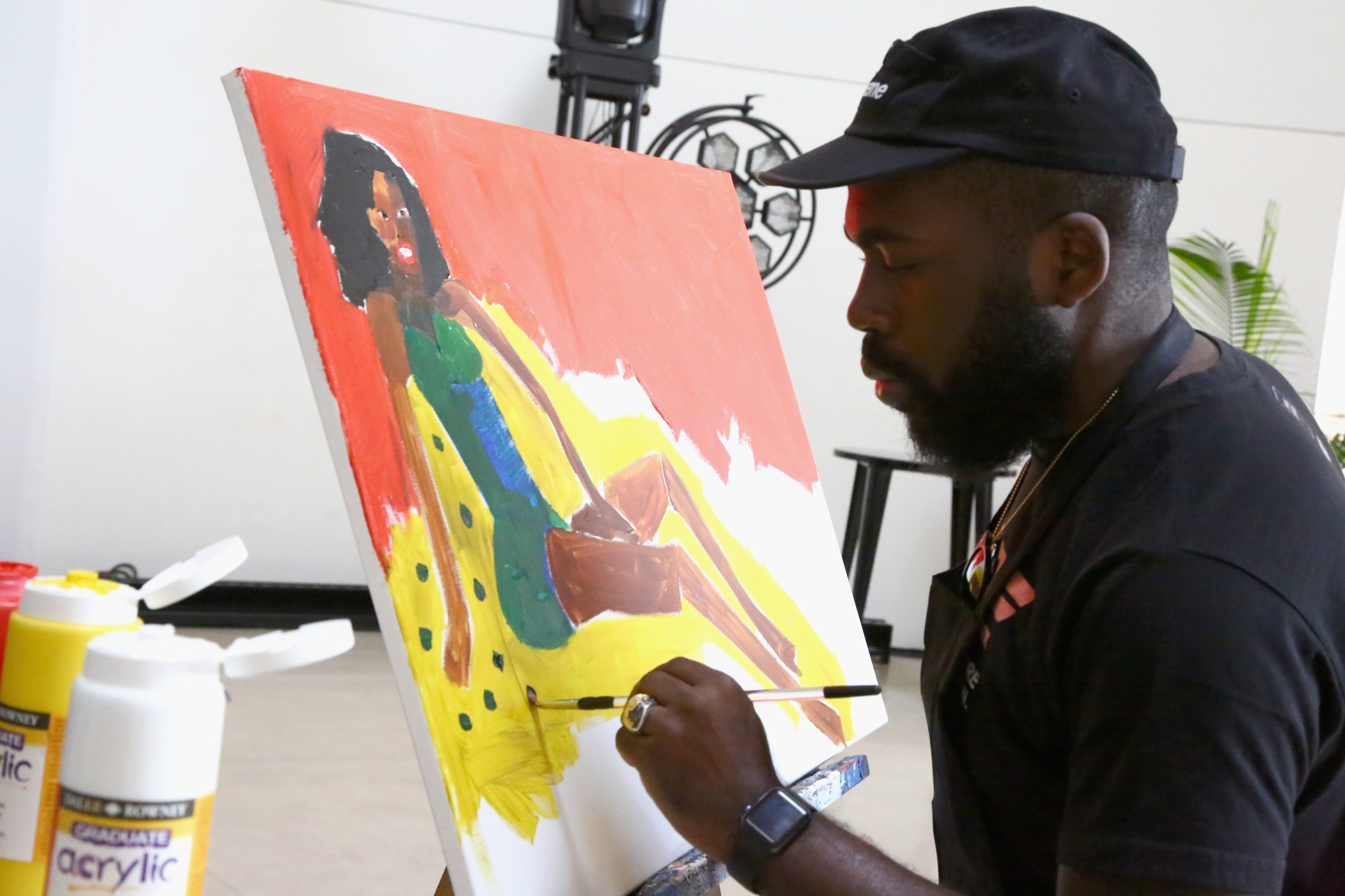
Derrick Adams
He’s a 50-year-old Baltimore-born, Brooklyn-based creator whose work encompasses painting, collage, sculpture, performance, video, and sound installations. His creations can be found in the permanent collections of the Metropolitan Museum of Art, the Studio Museum in Harlem, the Whitney Museum of American Art, the Virginia Museum of Fine Arts, and the Birmingham Museum of Art, but perhaps his biggest career boost came in 2020 courtesy of Beyoncé, who included an homage of sorts in her musical film Black Is King. “Artworks on display are key to understanding Black Is King, and one sequence set to the song ‘Mood 4 Eva’ features a decadent manse adorned with paintings of note,” Alex Greenberger wrote in ARTnews in August 2020. “At one point, a woman cloaked in a leopard-print jacket is seen gazing at a painting by Derrick Adams, whose pictures seem to fracture into abstract shapes focused on the representation of Black figures in mass media.” Learn about 14 Black Americans who made your life easier.
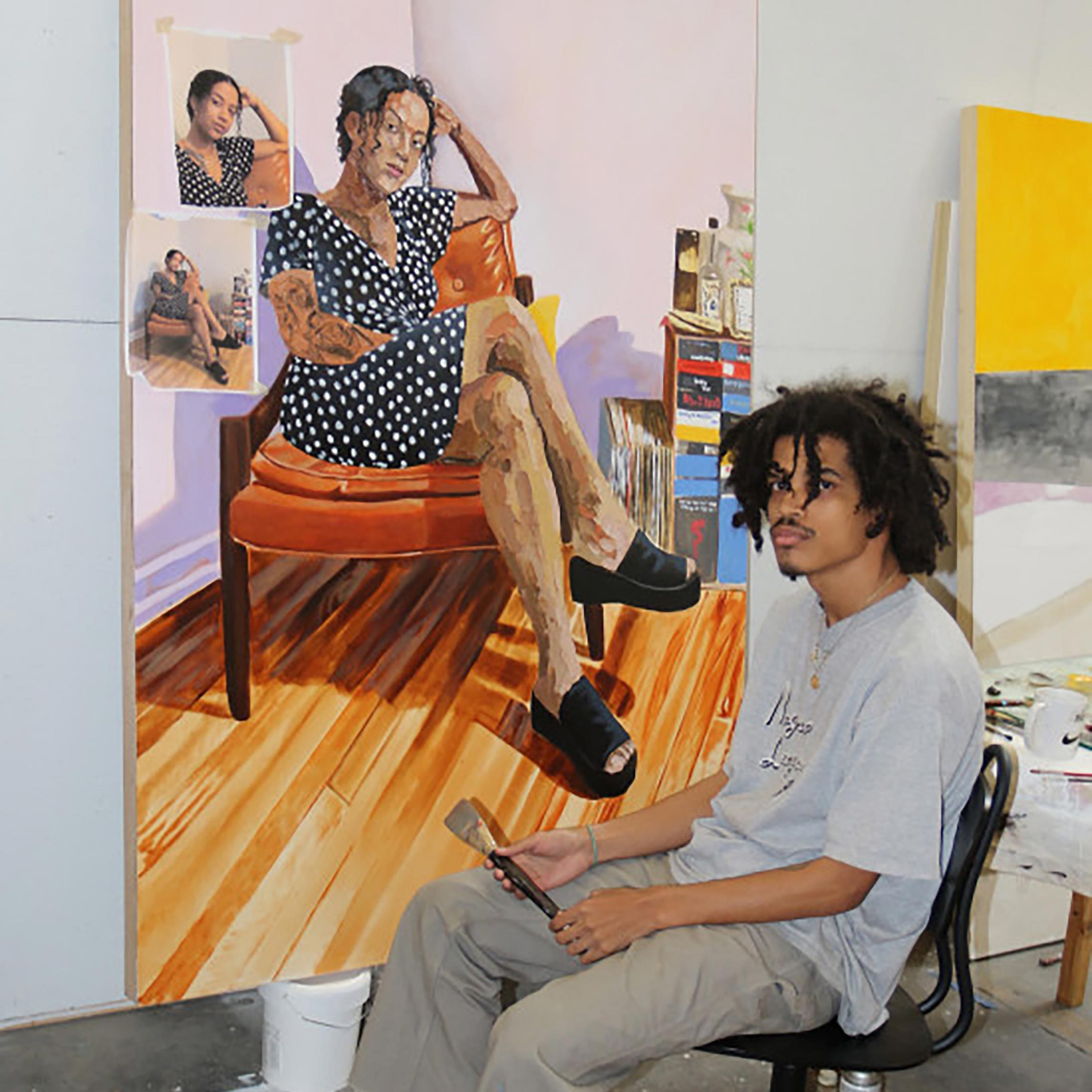
Gerald Lovell
Born in 1992 in Chicago to Black and Puerto Rican parents, Gerald Lovell creates paintings that thrive on texture. He paints the skin of his subjects with thick layers and uses burnt sienna and ochre to create shade and light. The rest has the flat surface of traditional paintings. “The palette work did come from experimentation,” he told Artsy in February 2020. “I was actually on YouTube (which has taught me Photoshop, Illustrator, and how to cook a good ramen) looking up different methods for oil paint application when I came across impasto painting, and it just appealed to me. The instructor was painting bell peppers and I just thought to myself, ‘It would be interesting to try to render a face that way.’ So I painted the first painting that way and I just stayed with it.” Staying with it has gotten him into the Kohn Gallery in Los Angeles and at P.P.O.W. shows in New York, L.A., and Miami. Great art pops up in unexpected places.
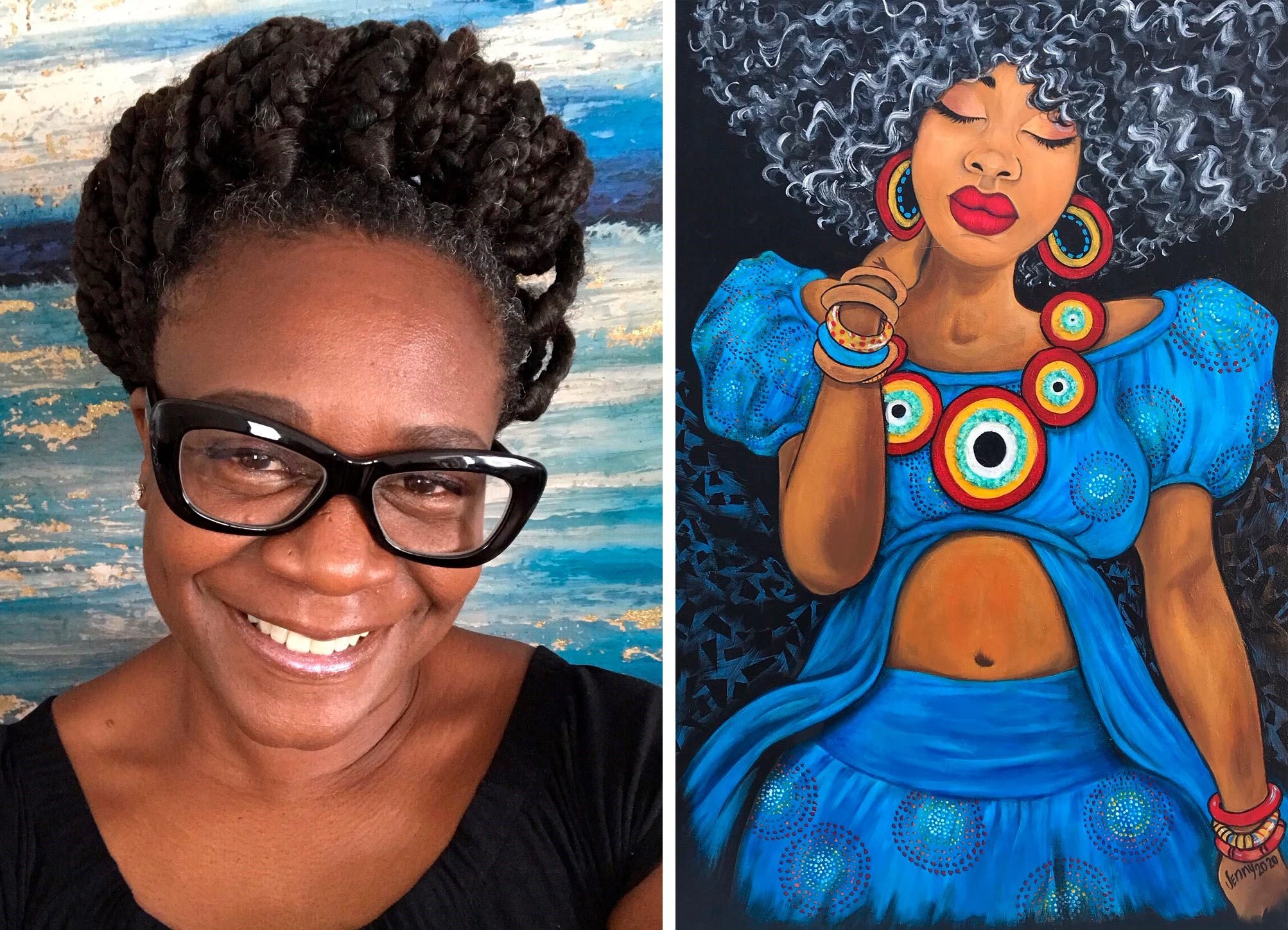
Jenny Pickens
On July 3, when the Asheville Arts Council in North Carolina announced the three artists who would create the new Black Lives Matter downtown mural, one of the trio was Asheville native Jenny Pickens. It’s a somewhat familiar gig for Pickens, who has already designed and painted a number of murals around her hometown and recently became the first Artist in Residence at 22 London, a local art studio. Pickens was raised by her grandmother while her parents were in prison, and she’s now a single mother. Her work, which focuses on women, zooming in on their eyes, is a reflection of the Black female strength she learned from her greatest role model. “Her new exhibition Perseverance deals with women redefining what it means to be strong and persistent despite barriers to continue making an impact on the world,” Sarah Shadburne wrote in thebluebanner.net in 2017.
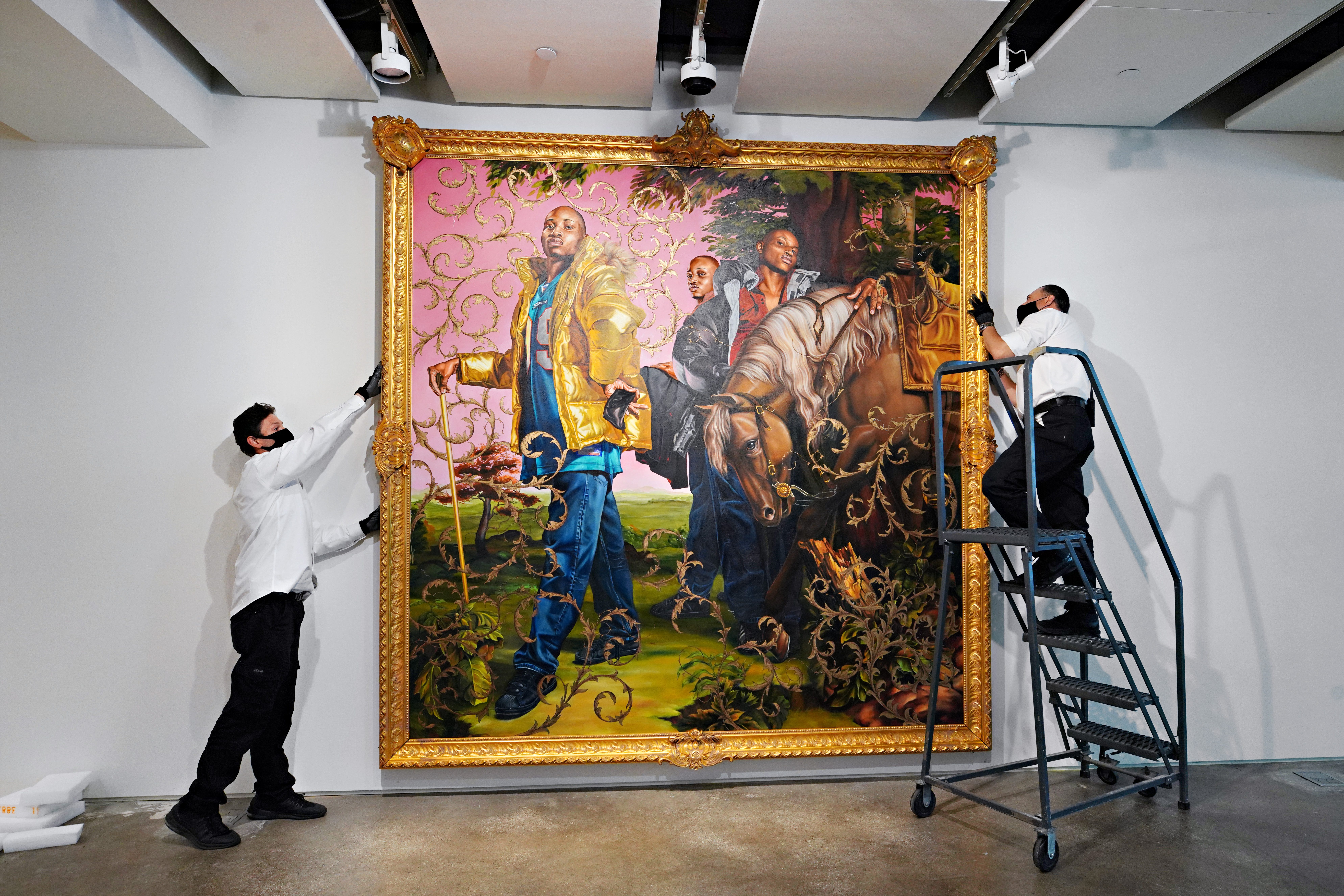
Kehinde Wiley
Few artists would be daring enough to re-imagine Napoleon as a Black man wearing Timberland boots, but that is precisely what Kehinde Wiley did in “Napoleon Leading the Army Over the Alps” (2005), a sort of spin-off from Jacques-Louis David’s “Napoleon Crossing the Alps” from 1800-1801 that was flipping history and race more than a decade before Hamilton. “By and large,” Jason Farago wrote in the New York Times in February 2020, “his art has treated the mere presence of a black sitter as a sufficient corrective to the oversights of European art.” While Wiley specializes in portrait painting of Black people, the 43-year-old from L.A. isn’t stuck in the past. His 2018 portrait of Barack Obama currently hangs in the Smithsonian National Portrait Gallery, alongside portraits of every other U.S. president. In a 2018 profile in the New Yorker, Wiley described his work succinctly and memorably: “It’s about looking at people who happen to look like me.” Napoleon wasn’t quite as short as history would have us believe. Here are 50 other “facts” that are actually false.
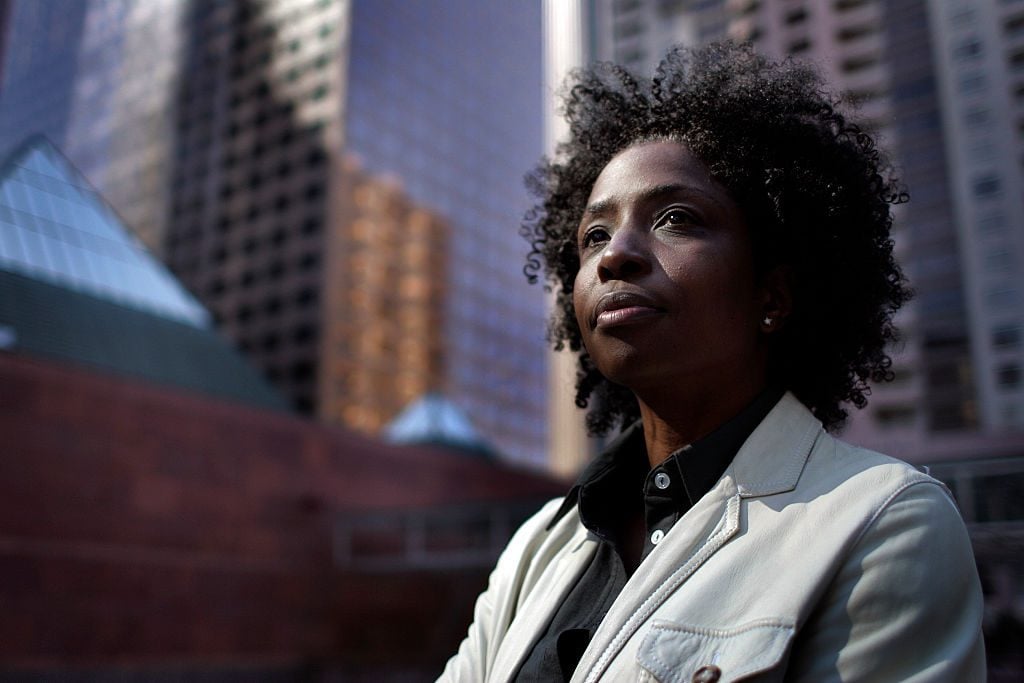
Lorna Simpson
This 60-year-old artist from Brooklyn has a way with images. When words alone won’t do, she combines them with powerful images to make bold statements about gender and race. In perhaps her best-known work, “Stereo Styles,” she presented ten images of Black women, connecting them to one-word descriptions: “Sweet,” “Ageless,” “Magnetic”… Any of these adjectives can be applied to Simpson as well as her creations, which have been featured at the Whitney Museum of American Art and the Museum of Modern American Art in New York City, the Walker Art Center in Minneapolis and the Miami Art Museum, to name just a few. Hair is a recurring theme in Simpson’s work, and in 2016, Mackenzie Wagoner wrote in Vogue: “Simpson seems to suggest that if we wear our history, it’s on top of our heads. From birth, the texture and color of our hair alone speak volumes about centuries of heritage, while length and style become culturally coded symbols of sex, location, musical preferences, and professions.”
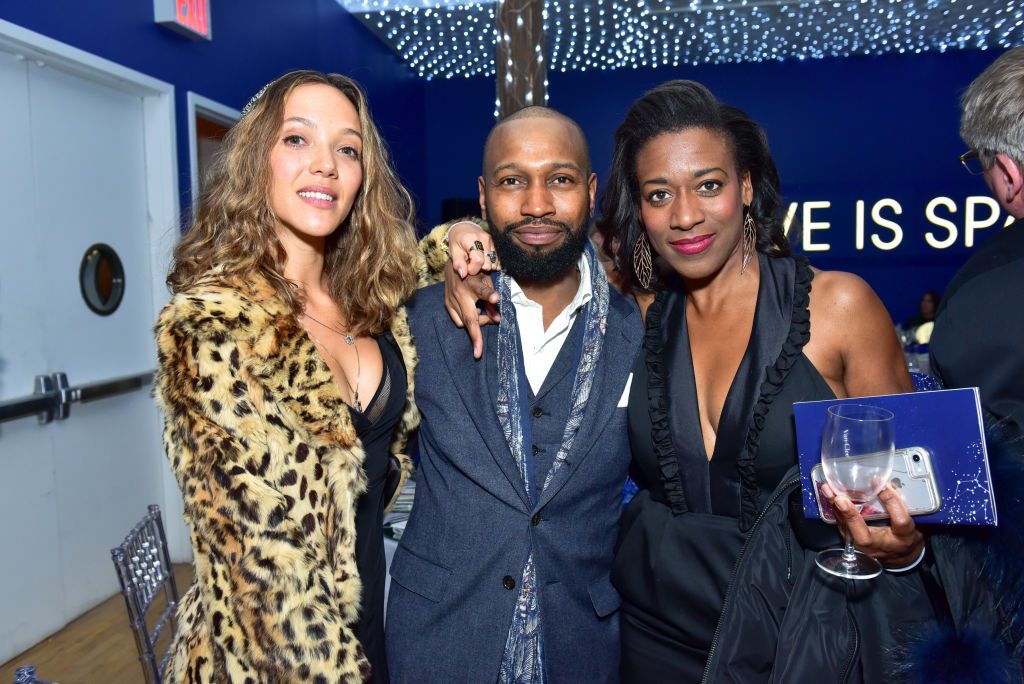
Nathaniel Mary Quinn
He’s known for creating collage-like portraits that look like disfigured faces, but although his work focuses on Black faces, his inspiration is more existential than racial. “I hope to convey a sense of how our experiences, both good and bad, operate to construct our identities,” the Chicago-born 43-year-old told Artsy. “I also want to portray a mutual relationship between the acceptable and the unacceptable, the grotesque, and what is aesthetically pleasing.” The distorted Cubist facial anatomy of his work recalls the paintings of Picasso’s post-blue period and accomplishes his goal while inspiring near-poetic praise. “Other artists might easily botch such a style, but Quinn achieves a graceful disorder that conveys unexpected emotion,” Jeremy Lybarger wrote in Art in America in March 2020. “In ‘Hard to Believe She’s A Mom, Now,’ a cloud of black hair fills the frame and surrounds a cinched face marked by luscious lips, a patchwork nose, and a single sultry eye. At twelve by nine inches, the work invites intimacy. Its tone could read as tender, stoic, or erotic—an ambiguity that underlies most of Quinn’s portraits.” You can see some of Picasso’s greatest works at the Picasso Museum in Paris.
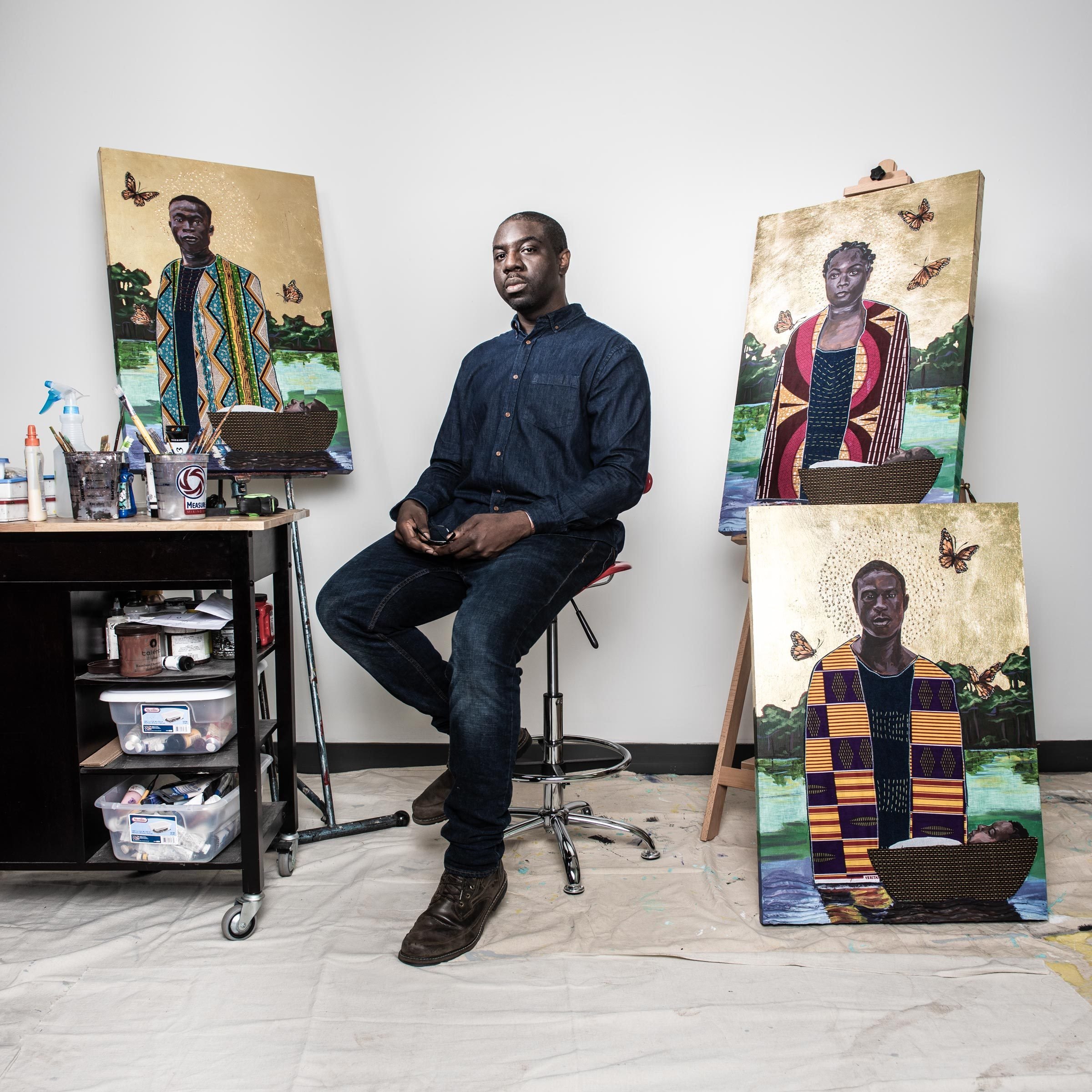
Stephen Towns
For Stephen Towns, inspiration comes from some unexpected places: medieval altarpieces, nineteenth-century photography, Dutch wax print fabrics, and Black American storytelling. His visual quilts offer an intriguing mix of Norman Rockwell-esque Americana with a Black twist and Vincent Van Gogh’s moody nighttime atmospherics. “Birth of a Nation,” the centerpiece of his first-ever show in 2018 at the Baltimore Museum of Art, featured a Black woman nursing a White infant while standing in front of the original U.S. flag. The others recreated the narrative of Nat Turner, who led the famous 1831 slave rebellion. “What fascinated me about these quilts is the way Stephen takes these gestures and postures that painters use to tell a story and translates them into quilting,” Cecilia Wichmann, the museum’s assistant curator of contemporary art, told the Baltimore Sun. “He’s using a visual vocabulary drawn from the long history of painting and combining it with the simplified forms, brilliant hues and patterning of quilts to tell a very human story.”
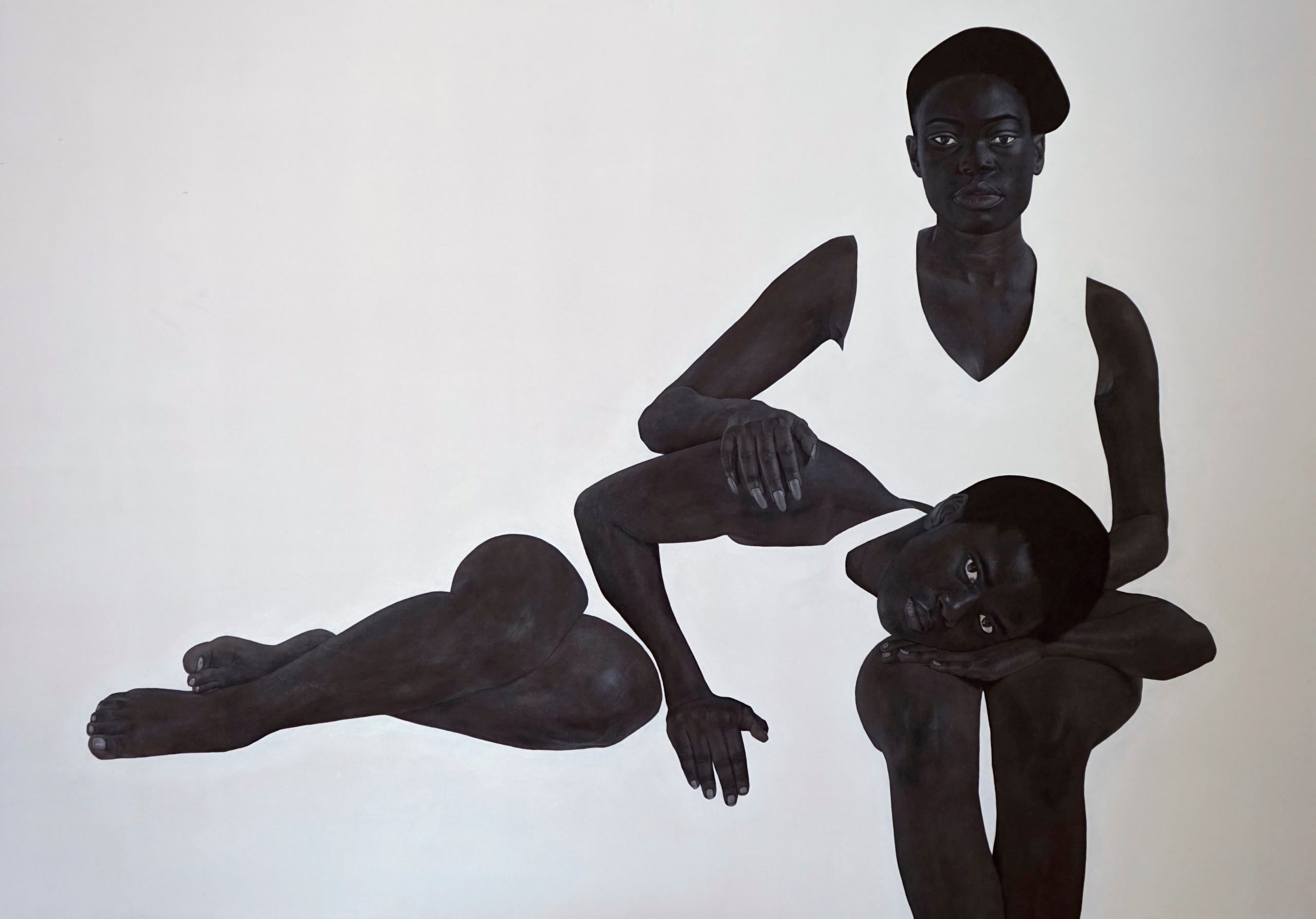
Sungi Mlengeya
The work of Tanzanian artist Sungi Mlengeye is stark and minimalist, but her dark bodies set against white backgrounds create a stunning, eye-popping effect. According to her website, “Sungi explores ‘space’ in her work, the white space in her paintings being any place that we are longing for. For her, the space represents a place of calm, free and detached from social norms and restrictions, real and imagined, that have altered complete liberty. She is inspired by everyday lives of women who surround her as they try to pursue their true preferences freely and uninhibitedly.” Her paintings, which have been shown in London and New York, stand in sharp contrast to the medium’s revered traditional portraiture and its obsession with pale, porcelain, and somewhat forbidding beauty. “Sungi Mlengeya is among the generation of African artists who have broken through the canon with her series of ink-black portraits of young women in East Africa,” Binwe Adebayo wrote in Nataal. “Rounded faces, soft expressions, full lips, and noses greet the viewer, shifting the vision of who the portrait subject should be; and allowing the viewer to feel welcomed, rather than dismissed by the face depicted on the canvas.”
Sources:
- The New York Times: “It’s About Time!”
- Artsy.net: “The Most Influential Living African American Artists”
- The Blue Banner: “Asheville artist redefines female strength in new exhibition”
- The New York Times: “Two Napoleons in Brooklyn, One in Timberland”
- The New Yorker: “Kehinde Wiley on Painting Masculinity and Blackness, from President Obama to the People of Ferguson”
- Vogue: “Artist Lorna Simpson Returns to Her Favorite Subject—Hair—With Exclusive New Works”
